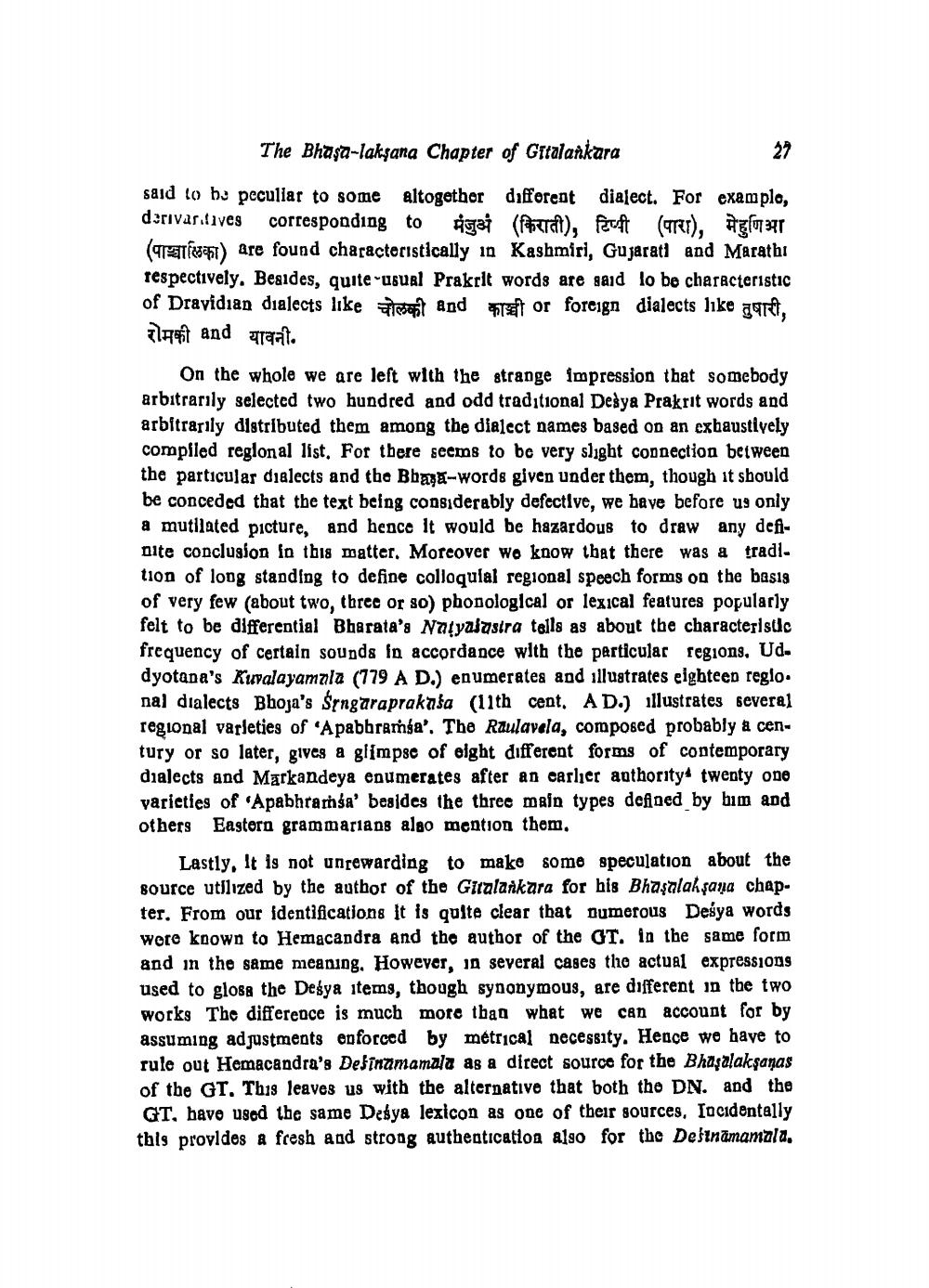________________
The Bhasa-laksana Chapter of Gítalankara
said to be peculiar to some altogether different dialect. For examplo, darivarcives corresponding to Agai (facrat), Peet (rar), Agar (arat ) are found characteristically in Kashmiri, Gujarati and Marathi respectively. Besides, quite-ugurl Prakrit words are sad lo be characteristic of Dravidian dialects like feel and left or foreign dialects like agri, Plast and great.
On the whole we are left with the strange impression that somebody arbitrarily selected two hundred and odd traditional Desya Prakrit words and arbitrarily distributed them among the dialect names based on an exhaustively compiled regional list. For there seems to be very slight connection between the particular dialects and the Bba a-words given under them, though it should be conceded that the text being considerably defective, we have before us only a mutilated picture, and hence It would be hazardous to draw any definite conclusion in this matter. Moreover wo know that there was a tradi. tion of long standing to define colloquial regional speech forms on the basis of very few (about two, three or so) phonological or lexical features popularly felt to be differential Bharata's Natyalasira tells as about the characteristic frequency of certain sounds in accordance with the particular regions, Ud. dyotana's Kuvalayamala (779 A D.) enumerates and illustrates eighteen reglo. nal dialects Bhoja's Śrngaraprakala (11th cent. AD.) illustrates several regional varleties of "Apabbraṁsa'. The Raulavela, composed probably a century or so later, gives a glimpse of eight different forms of contemporary dialects and Markandeya enumerates after an earlier authority* twenty one varieties of "Apabhrama' besides the three main types defined by bim and others Eastern grammarians also mention them.
Lastly, It is not onrewarding to make some speculation about the Bource utilized by the author of the Giralankara for his Bhaşalahşana chapter. From our identifications It is quite clear that numerous Desya words were known to Hemacandra and the author of the OT. In the same form and in the same meaning. However, in several cases the actual expressions used to gloss the Deśya items, though synonymous, are different in the two works The difference is much more than what we can account for by assuming adjustments enforced by metrical necessity. Hence we have to rule out Hemacandra's Debinamamala as a direct source for the Bhaşalaksanas of the GT. This leaves us with the alternative that both the DN. and the GT, have used the same Desya lexicon as one of their sources, Tocidentally this provides a fresh and strong authentication also for the Deštnāmamala.




